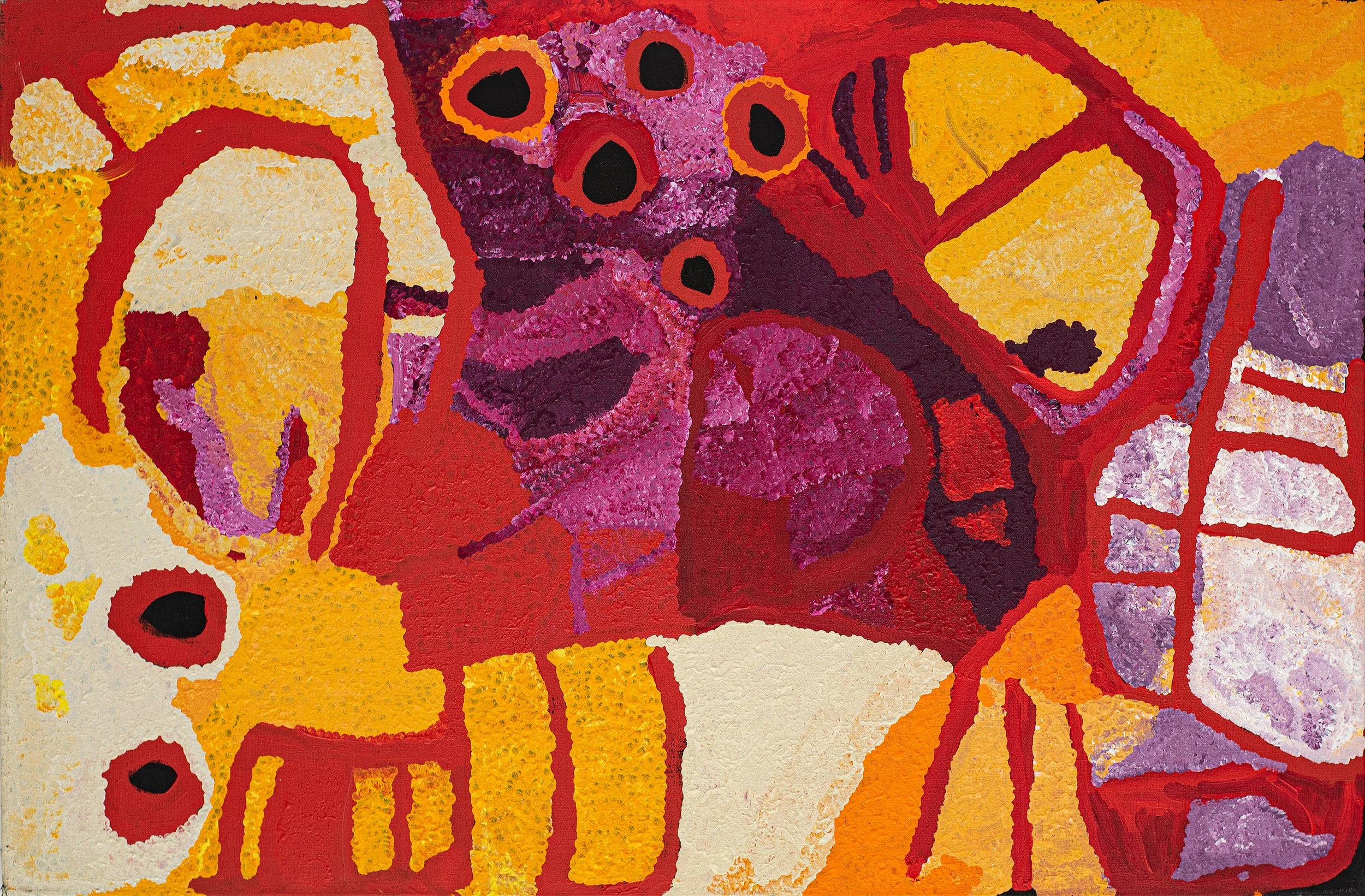Myrtle Pennington - Kanpa - 137 x 90 cm - 18-88 (sold)
Myrtle Pennington - Kanpa - 137 x 90 cm - 18-88 (sold)
Artiste : Myrtle Pennington
Titre de l'œuvre : Kanpa
Format : 137 × 90 cm
Provenance et certificat : centre d'art aborigène du Spinifex Art Project
Référence de cette peinture : 18-88
Explications pour cette œuvre :
Myrtle was born c.1939 in the vicinity of a rock hole called Kanpa in central Spinifex. The rock hole itself is a point along a highly sensitive senior Men’s tjukurpa which Myrtle would not have seen or drawn water from. Myrtle’s journey out of Spinifex to Cundeelee Mission in the late 1950’s was particularly tragic for Myrtle and her family (a son and husband perished on the trip). Myrtle, with another son and daughter, were eventually located by Australian servicemen from an army base at Neale’s Junction, who held them until Cundeelee Mission staff arrived to take the family to Cundeelee.
The Spinifex People inhabited the Great Victoria Desert long before Europeans landed on this continent’s shoreline. They survived in an arid but beautiful environment, equipped with the necessary skills required for such a life.A spiritual people guided by cultural law were able to exist virtually unchallenged and unchanged until the 1950’s when the British atomic testing began at Emu Fields and later at Maralinga. These tests directly displaced the Spinifex People and it would be over thirty years before their traditional lands were finally returned to them in the form of native title and they were able to once again access the country that formed them from birth. For the landscape holds the culture of the Spinifex People and their daily interactions are governed by the moral compass of the first beings who created the physical realm. With story interwoven in song and dance, the country maps a tangible way forward for the people to reflect and learn upon.
It is this country, this spiritual landscape that defines and permeates Myrtle Pennington’s work. Although abstract in appearance each piece holds part history, part ceremony and part country. Myrtle assumes the vastness of the landscape imbued with the colourful light in profound yet simple compositions. She recalls the places that sustained her during those early formative years and gives rise to the sites of Mulpulya and Kanpa, surrounding them with sandhills and salt lakes or plains that lead to rocky escarpments. She reads the scene from a sense of belonging, of being interwoven into the fabric of the landscape she creates. All this Myrtle captures and conveys with ease, moving the brush and colour freely, building a textural quality that prompts one to walk with her through this vast Country.

